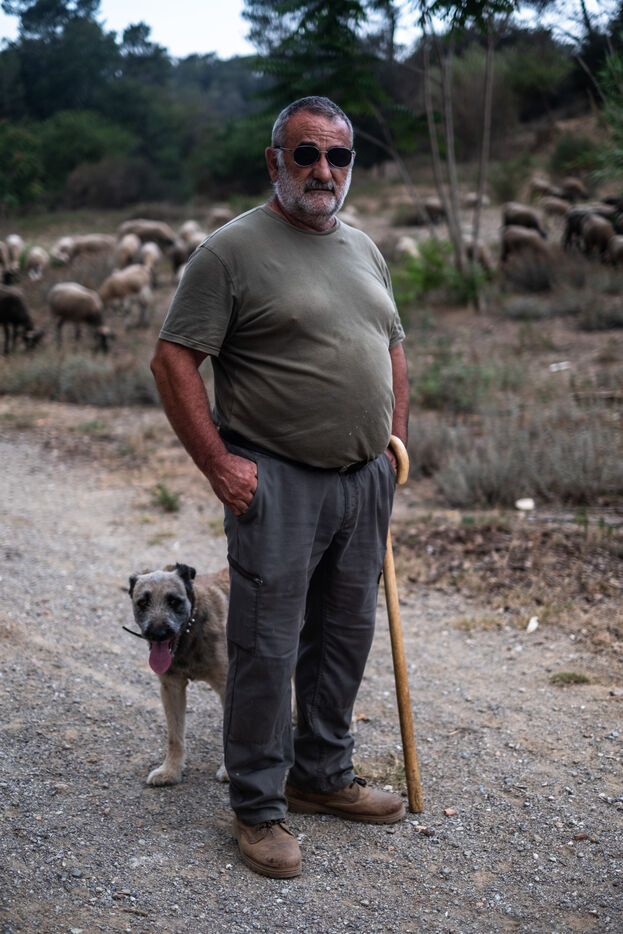PLACENTA
Article entier disponible. Extrait.
Ciel lourd et pas de vent. Ni meme leger. Temps assommant. Consequence, je suis ailleurs et en decalage avec mon environnement ; comme saoul. La chaleur qui menveloppe ne fait plus quun avec le peu dhabit que je porte encore. Je me deplace hypnotise par le view-finder de mon appareil photo autour de la scene qui se joue sous mes yeux. Tout va vite et les gestes se repetent. Une harmonie des lignes prend forme avec les corps de ces femmes au travail qui ne fait plus quun avec la matiere quelles manipulent. Je photographie. Je me rapproche. Je suis tout pres delles et je declenche encore. Une fois, deux fois, trois fois, mille fois. Me voient-elles ?
Une lumiere douce et blanche maccompagne pour ce reportage auquel jajoute un leger mouvement brusque et feminin. Les images saccumulent dans ma carte memoire. Au son, la playlist du Sonar (Festival de musique electro a Barcelone) rythme notre choregraphie et accompagne leur propos. « Il la agresse. Il les draguait toutes » (...) « Pour la couleur rouge de la laine on dira que cest pour faire echo au placenta » (...) « Masser la laine avec les pieds ca detend trop ! » puis la voix de Rosalia dans lenceinte : « les amies que lon peut embrasser sont toujours les meilleures ». Les regards sont complices. Ils se sourient. «Il faut normaliser le topless» et je photographie.
Aujourd hui elles sont quatre. Hier elles etaient cinq, et demain ne viendront qu Ana, Martina et Flor. Ca va ca vient selon les jours et les emplois du temps de chacune. Je suis en Espagne en Catalogne a Sant Cugat, banlieue huppee de Barcelone. Ici les etes sont de plus en plus chauds et les risques dincendies toujours plus presents. En fait maintenant a chaque et ca brule tout le temps.
Ana et Martina sont deux catalanes. Ensemble, elles portent un projet artistique soutenu par lecole dart et de design EINA a Barcelone. La visee est sociale et ecologique. Elles veulent sensibiliser le grand public a la protection de l'environnement et plus concre?tement au Parc Naturel de Colserolla. « Ici tout sest construit ; les gens ne savent meme pas quils ont un parc. » Leur idee cest de reactiver lindustrie du textile de la laine de moutons en sappuyant sur le travail des bergers et de leur troupeau.
PLACENTA
Full article available. Excerpt.
Heavy sky and no wind. Not even a slight breeze. Oppressive weather. As a result, I am elsewhere, out of sync with my surroundings, almost like I'm intoxicated. The heat envelops me, blending with the few clothes I still wear. I move, hypnotized by the viewfinder of my camera, circling the scene unfolding before my eyes. Everything is fast-paced, and the movements repeat themselves. Harmony of lines takes shape with the bodies of these working women, merging seamlessly with the material they manipulate. I take photographs. I get closer. I am right next to them, and I trigger the shutter again. Once, twice, three times, a thousand times. Can they see me?
Soft, white light accompanies me on this reportage, to which I add a subtle and feminine abrupt movement. Images accumulate in my memory card. In the background, the playlist from Sonar (the electronic music festival in Barcelona) sets the rhythm for our choreography and accompanies their conversation.
"He assaulted her. He hit on all of them" (...)
"For the red color of the wool, can we say it's to echo the placenta?" (...)
"Massaging the wool with our feet is so relaxing!" Then, Rosalía's voice in the speakers:
"The friends you can kiss are always the best." The glances are complicit. They smile at each other.
"We need to normalize toplessness," and I photograph.
Today, there are four of them. Yesterday, there were five, and tomorrow only Ana, Martina, and Flor will come. It comes and goes depending on the days and everyone's schedules. I am in Spain, in Catalonia, in Sant Cugat, an upscale suburb of Barcelona. Here, summers are getting hotter, and the risk of fires is ever-present. In fact, every summer, it burns all the time.
Ana and Martina are two Catalans. Together, they lead an artistic project supported by the EINA School of Art and Design in Barcelona. The aim is both social and ecological. They want to raise public awareness about environmental protection, specifically focusing on the Collserola Natural Park.
"Here, everything has been built; people don't even know they have a park." Their idea is to revive the sheep wool textile industry by leveraging the work of shepherds and their flock.





































































